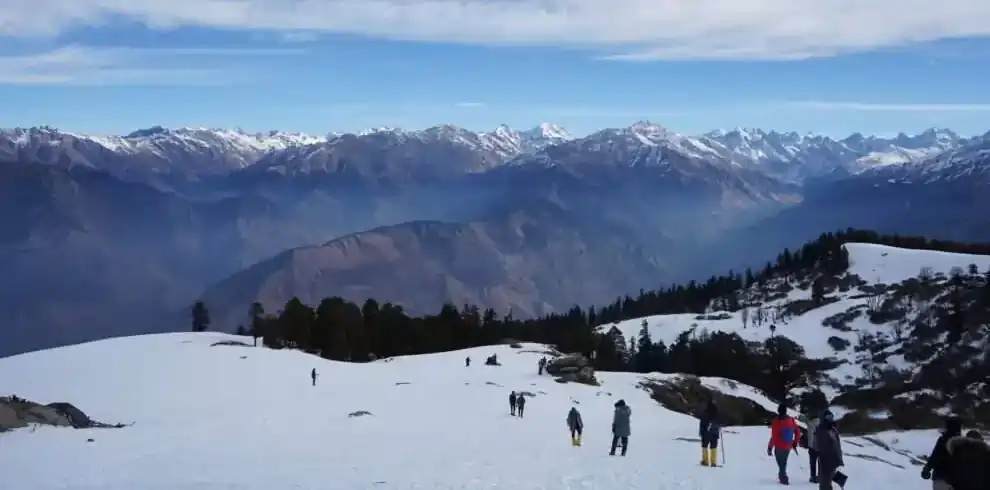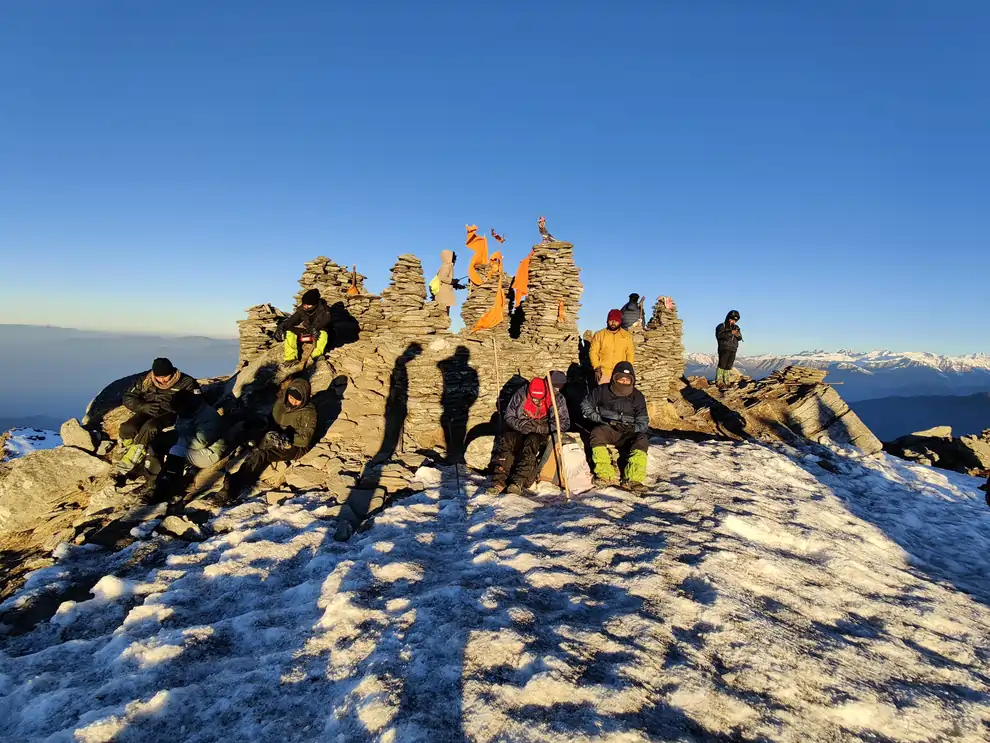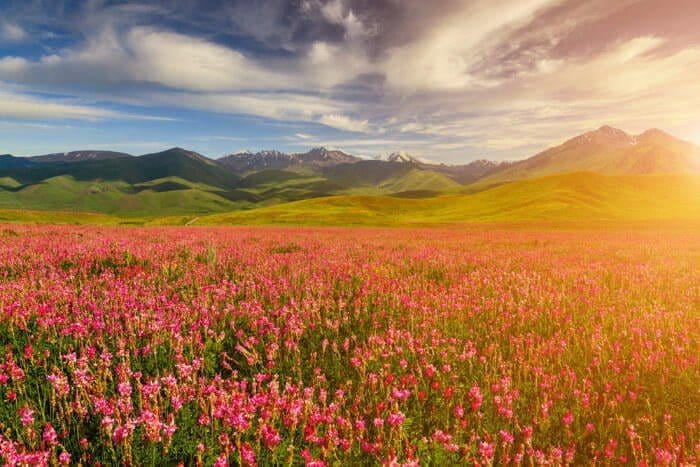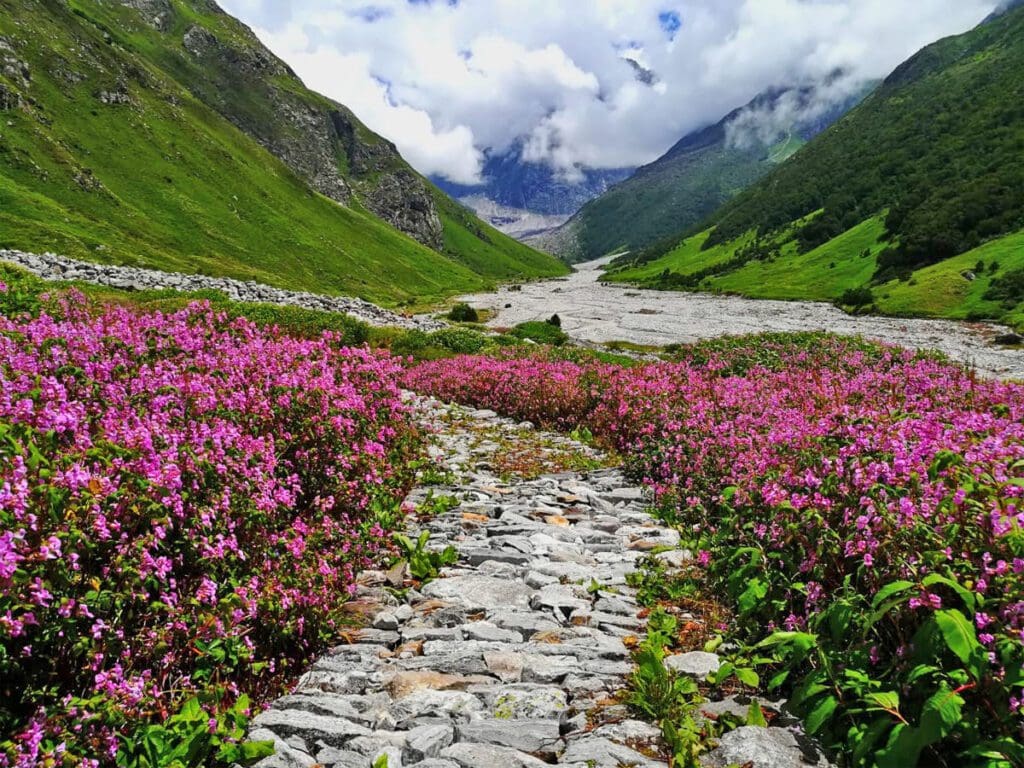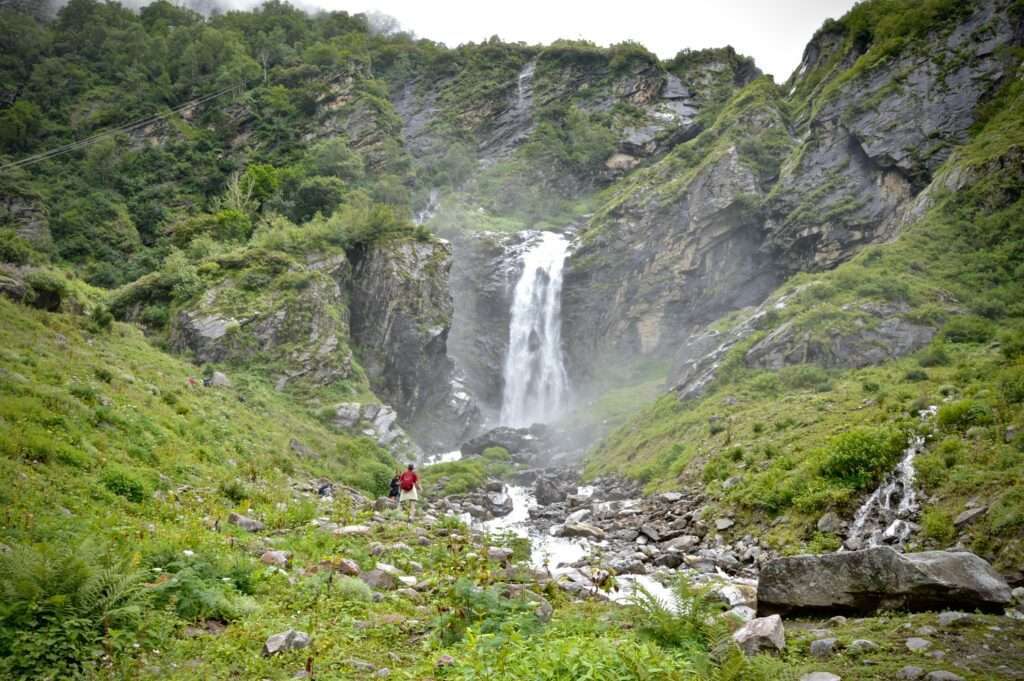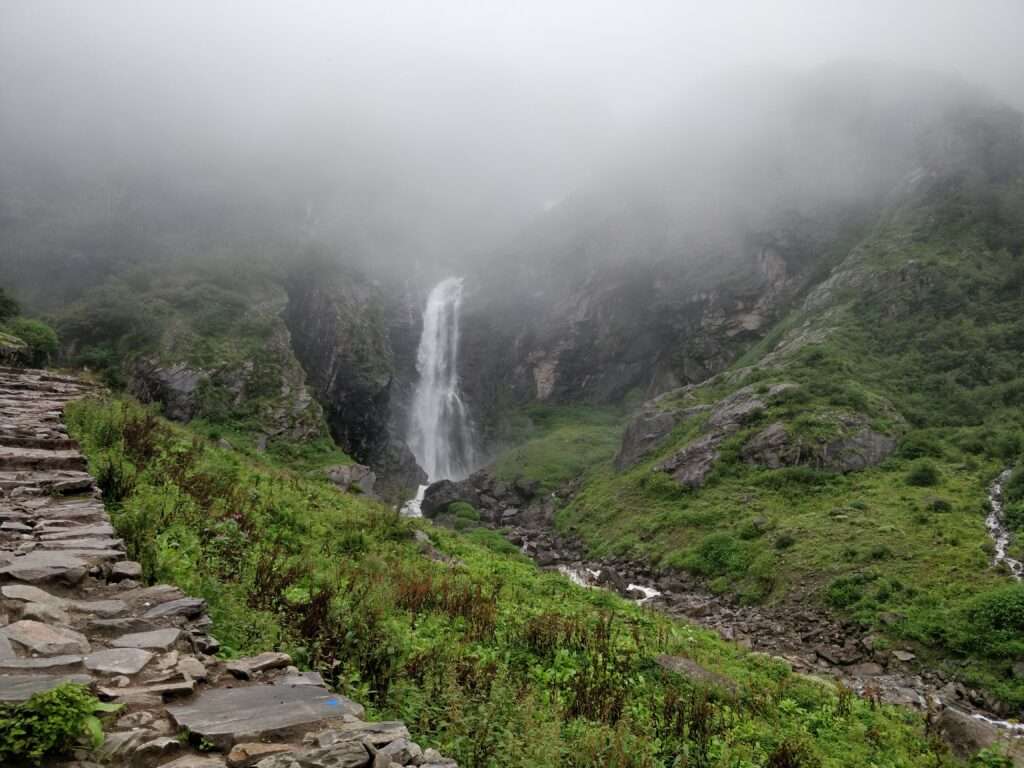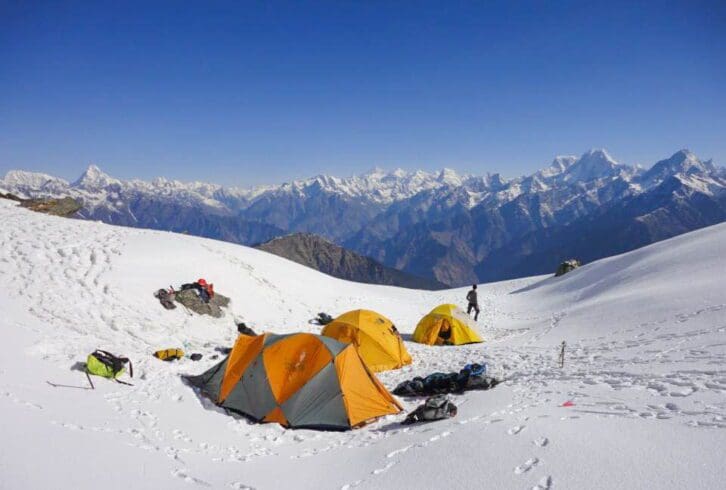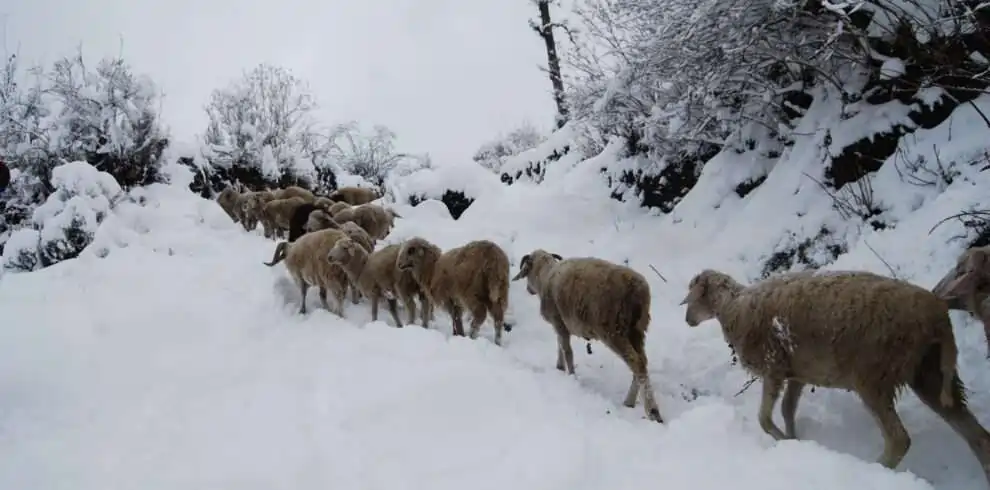Kedarkantha trek
Do you want to experience the thrill of summiting a mountain in the winter? The Kedarkantha trek is the perfect choice for you.
Located in Uttarakhand’s Western Garhwal region, the Kedarkantha trek is a great choice for novice trekkers looking to experience the beauty of India’s snow-capped Himalayas.
The Kedarkantha Trek is the perfect way to start your trekking journey.
It’s a short and sweet trek that can be completed in less than a week, making it a great choice for those with limited time.
Plus, the stunning views of the snow-capped Himalayas make this trek worth every step.
What to Expect on the Kedarkantha Trek
Embarking on the Kedarkantha trek is a journey that promises a tapestry of experiences, from picturesque villages to snow-capped peaks. Here’s a glimpse of what awaits:
-
Starting Point – Dehradun:
- The trek begins in Dehradun, setting the stage for an adventure that unfolds in the heart of the Himalayas.
-
Traversing Tons Valley:
- The route takes you through the scenic villages of Tons Valley, where every step immerses you in the natural beauty of the Himalayan landscape.
-
Lush Green Forests and Meadows:
- En route to the base camp, nature’s canvas unfolds with lush green forests and meadows, creating a serene backdrop for your trek.
-
Breathtaking Views at Base Camp:
- Upon reaching the base camp, be prepared to be greeted by awe-inspiring views of snow-capped peaks, a visual feast that marks the beginning of your mountainous journey.
-
Frozen Lakes and Glaciers:
- The trek introduces you to the ethereal beauty of frozen lakes and glaciers, a testament to the raw, untouched magnificence of the Himalayan region.
-
Ascending to the Summit:
- The following days of the trek lead you up the mountainside, presenting diverse terrains that include rocky trails, snow-covered paths, and picturesque grassy meadows.
-
Wildlife Encounters:
- Keep an eye out for the Himalayan Thar, the Himalayan Monal, and the Himalayan Snowcock, as the trek offers glimpses of the region’s unique and diverse wildlife.
The Kedarkantha trek is more than a physical journey; it’s an immersive experience into the soul-stirring beauty of the Himalayas. From the vibrant villages to the serene meadows and the majestic peaks, every moment on this trek is a step closer to nature’s grandeur.
The Summit and Decent
The summit of Kedarkantha is one of the most rewarding parts of the trek. From here, you’ll get to enjoy the panoramic views of the snow-capped Himalayas and the surrounding valley.
After spending some time at the summit, you’ll make your way back down the mountain and back to the base camp.
On your descent, you’ll get to experience the same sights and sounds that you encountered on your way up.
You’ll get to enjoy the lush forests, meadows, and even the frozen lakes.
Best Time To Visit Kedarkantha Trek
The Kedarkantha trek offers different flavors of beauty throughout the year, but selecting the right season enhances the overall experience. Here’s a breakdown of the optimal times to undertake this captivating journey:
- Winter Wonderland (December to February):
- Snow-Covered Splendor: Winter transforms the trek into a magical snow-laden landscape.
- Chilly Adventures: Embrace the cold as you navigate the snow-covered trails and experience the thrill of trekking in winter.
- Spring Awakening (March to April):
- Blooming Meadows: Spring brings life to the meadows with vibrant wildflowers and lush greenery.
- Mild Weather: Enjoy pleasant temperatures as nature comes alive with the onset of spring.
- Summer Serenity (May to June):
- Clear Skies and Views: Summer provides clear skies, offering unobstructed views of the surrounding peaks.
- Moderate Temperatures: Experience comfortable trekking conditions with milder temperatures.
- Autumn Allure (September to November):
- Post-Monsoon Magic: After the monsoon, the landscapes are refreshed, and the skies are generally clear.
- Crisp Mountain Air: Enjoy the crisp mountain air as you trek through a rejuvenated Himalayan terrain.
Choosing the best time for the Kedarkantha trek depends on your preferences and the kind of experience you seek.
Whether it’s the enchanting snowscape of winter, the blossoming meadows of spring, the clear vistas of summer, or the post-monsoon allure of autumn, each season unveils a unique facet of this Himalayan trekking gem.
KedarKantha Trek Distance
The Kedarkantha trek covers a total distance of approximately 20 kilometers (round trip), offering a perfect blend of challenges and rewards. The trail takes you through enchanting pine forests, quaint villages, and opens up to vast snow-covered meadows as you ascend towards the summit.
Each step unveils a new facet of the Himalayas, making the journey memorable for both beginners and seasoned trekkers.
Weather Conditions At KedarKantha Trek
-
Winter Wonderland (December to March)
- Winter is the prime trekking season for Kedarkantha, transforming the region into a snow-laden paradise.
- Daytime temperatures range from -2°C to 10°C, providing a crisp and invigorating atmosphere.
- Night temperatures can plummet to as low as -8°C, making it essential to pack adequate winter gear.
-
Pre-Spring (April to June)
- As spring unfolds, the snow starts to recede, revealing vibrant alpine meadows.
- Day temperatures range from 5°C to 20°C, creating comfortable trekking conditions.
- Night temperatures remain cool, ranging from -5°C to 5°C.
-
Monsoon Caution (July to September)
- Monsoon months are not recommended for the Kedarkantha trek due to heavy rainfall and potential landslides.
- The trails can become slippery and challenging, impacting the overall trekking experience.
-
Autumn Beauty (October to November)
- Post-monsoon, autumn sets in, offering clear skies and panoramic views.
- Day temperatures range from 0°C to 15°C, creating pleasant trekking conditions.
- Night temperatures hover between -5°C and 5°C.
Height of Kedarkantha Summit
The summit of Kedarkantha stands at an elevation of approximately 3,800 meters (12,500 feet) above sea level. Reaching this height is not just a physical accomplishment; it rewards trekkers with sweeping views of the snow-capped Himalayan peaks, including the Bandarpoonch, Swargarohini, and Black Peak.
Accommodation and Food on the Kedarkantha Trek
The Kedarkantha trek is a comfortable trek, with basic accommodation and food provided throughout the trek.
The accommodation is usually in homestays or tents, depending on the availability. The food is typically vegetarian, but you can ask the homestay owners if they can provide you with non-vegetarian meals. They’re usually willing to oblige.
Safety Measures on the Kedarkantha Trek
Conclusion
The Kedarkantha trek is a great choice for those looking to experience the beauty of the snow-capped Himalayas in the winter.
It’s a short and sweet trek that can be completed in less than a week, and it offers breathtaking views of the mountains and the surrounding valley.
Plus, the accommodation and food provided throughout the trek are comfortable and convenient. So, what are you waiting for? Plan your Kedarkantha trek today!
Things To Carry For KedarKantha
- Backpack 65/90 L
- Water Bottle
- Energy Bars
- Weather Appropriate Clothing
- Warm Jacket
- Flee Jacket
- Sun protection
- Rain Protection
- Flashlight And Extra Batteries
- Extra Pair of Clothing
- Towel
- Personal Hygiene Kit
- Mini First Aid Kit
- Personal Medication
- Trash Bag
- Moisture Cream
- Tissues
- Slippers
- Gloves
- Sunglass
- Warm Hat
- Insect repellent
- An emergency whistle
Checkout Similar Winter Treks
Hampta Valley Snow Trek
Chopta Tungnath Trek

